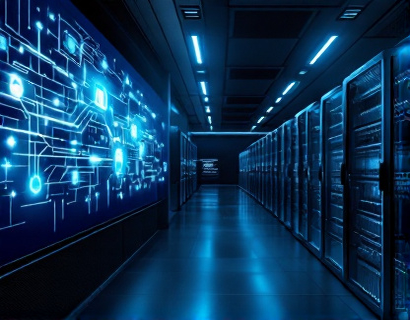Navigating the Ucosystem: A Beginner's Guide to Understanding Interconnected Complexity and Its Benefits
The Ucosystem, a term that encapsulates the intricate web of interconnected systems and processes, can initially seem daunting to newcomers. However, with a structured approach and a clear understanding of its components, navigating this complex landscape becomes manageable and even beneficial. This guide aims to demystify the Ucosystem, breaking down its key elements and highlighting the advantages of embracing its interconnected nature.
To begin, it's essential to grasp the fundamental concept of interconnectedness. In the Ucosystem, various elements such as systems, networks, and processes are not isolated but rather interlinked, influencing and dependent on one another. This interconnectedness forms a dynamic and adaptive network that can be observed in various domains, from technology and ecology to economics and social structures.
Understanding the Components of the Ucosystem
The Ucosystem comprises several key components that, when understood individually, contribute to a comprehensive view of the whole. These components include nodes, links, and emergent properties.
Nodes represent the individual elements within the network. In the context of the Ucosystem, nodes can be entities such as individuals, organizations, or technologies. Each node has its unique characteristics and functions, contributing to the overall complexity of the system.
Links, on the other hand, are the connections between nodes. These links can be direct or indirect and can vary in strength and type. In the Ucosystem, links facilitate the flow of information, resources, and influence, enabling the system to function cohesively.
Emergent properties arise from the interactions between nodes and links, resulting in new patterns and behaviors that cannot be predicted by examining the components in isolation. These properties are a hallmark of complex systems and are crucial for understanding the Ucosystem's dynamic nature.
Benefits of Embracing Interconnectedness
The interconnectedness of the Ucosystem offers numerous benefits that can enhance various aspects of life and business. One of the primary advantages is increased resilience. In a interconnected system, the failure of a single node does not necessarily lead to the collapse of the entire network. Instead, other nodes can adapt and compensate, maintaining the system's functionality and stability.
Another significant benefit is enhanced innovation. The cross-pollination of ideas and resources across different nodes fosters creativity and leads to novel solutions and advancements. This is particularly evident in collaborative environments where diverse perspectives converge to drive innovation.
Interconnectedness also promotes efficiency and optimization. By leveraging the strengths of various nodes and optimizing the links between them, resources can be allocated more effectively, reducing waste and improving performance. This is crucial in fields such as supply chain management, where efficient coordination can lead to significant cost savings and faster delivery times.
Case Study: The Internet as a Ucosystem
To illustrate the benefits of interconnectedness, consider the Internet as a prime example of a Ucosystem. The Internet is a vast network of interconnected nodes, including servers, devices, and users. Each node plays a specific role, from hosting websites to processing data and facilitating communication.
The links in this network are the protocols and connections that enable data to travel seamlessly between nodes. This interconnectedness has led to unprecedented levels of information access, global communication, and economic opportunities. The resilience of the Internet is evident in its ability to recover from disruptions, such as server outages or cyber-attacks, thanks to its redundant and adaptive nature.
Moreover, the Internet's ecosystem has spurred innovation across various sectors, from e-commerce and social media to remote work and online education. The efficiency gained through optimized networks has transformed how businesses operate and how people interact, making the Internet an indispensable part of modern life.
Navigating the Ucosystem: Practical Insights
For individuals seeking to navigate the Ucosystem effectively, several practical insights can guide their approach. First, adopting a systems thinking mindset is crucial. This involves viewing problems and opportunities through the lens of interconnectedness, recognizing that actions in one part of the system can have ripple effects elsewhere.
Building a network of diverse connections is another key strategy. Engaging with a variety of nodes, whether through professional networks, community groups, or online platforms, can provide access to a broader range of resources and perspectives. This diversity enhances adaptability and opens up new avenues for collaboration and learning.
Embracing technology as a tool for navigation is also essential. Utilizing digital platforms and tools can help individuals map and analyze the Ucosystem, identify key nodes and links, and monitor emergent properties. Data analytics and network visualization software can provide valuable insights, enabling more informed decision-making.
Developing a Learning Mindset
Given the dynamic nature of the Ucosystem, a commitment to continuous learning is vital. Staying updated with the latest trends, research, and innovations in relevant fields ensures that individuals remain relevant and can adapt to changes effectively. This might involve following industry publications, attending conferences, or participating in online courses.
Furthermore, fostering a culture of experimentation and iteration can lead to better navigation of the Ucosystem. By testing hypotheses, learning from failures, and refining approaches, individuals can navigate the complexities of interconnected systems more adeptly.
Challenges and Considerations
While the benefits of the Ucosystem are significant, there are also challenges and considerations to keep in mind. One major challenge is the potential for information overload. The sheer volume of data and connections can be overwhelming, making it difficult to discern what is relevant and actionable. Developing skills in filtering and prioritizing information is essential to manage this challenge effectively.
Another consideration is the risk of unintended consequences. In a highly interconnected system, actions can have far-reaching and sometimes unforeseen effects. It's important to approach decision-making with a holistic view, considering the potential impacts on various nodes and the system as a whole.
Privacy and security are also critical concerns in the Ucosystem, particularly in the digital realm. As interconnectedness increases, so does the risk of data breaches and privacy violations. Implementing robust security measures and being mindful of data sharing practices are crucial for navigating these risks.
Building Resilient Networks
To build resilient networks within the Ucosystem, focus on creating strong and diverse connections. This involves nurturing relationships with a variety of nodes, ensuring that the network is not overly dependent on a few key connections. Diversity in connections can enhance resilience by providing multiple pathways for information and resource flow.
Transparency and trust are foundational elements in building resilient networks. Open communication and mutual trust among nodes foster cooperation and collaboration, strengthening the overall network. Encouraging transparency in processes and decision-making can help build and maintain trust within the network.
Finally, embracing flexibility and adaptability is key to navigating the dynamic nature of the Ucosystem. Being open to change and willing to adjust strategies in response to new information or circumstances can help individuals and organizations thrive in an interconnected world.
In conclusion, the Ucosystem, with its intricate web of interconnected systems, presents both challenges and opportunities. By understanding its components, embracing interconnectedness, and adopting practical strategies for navigation, individuals can harness the benefits of this complex landscape. Whether in personal development or professional endeavors, navigating the Ucosystem effectively can lead to enhanced resilience, innovation, and efficiency.










































